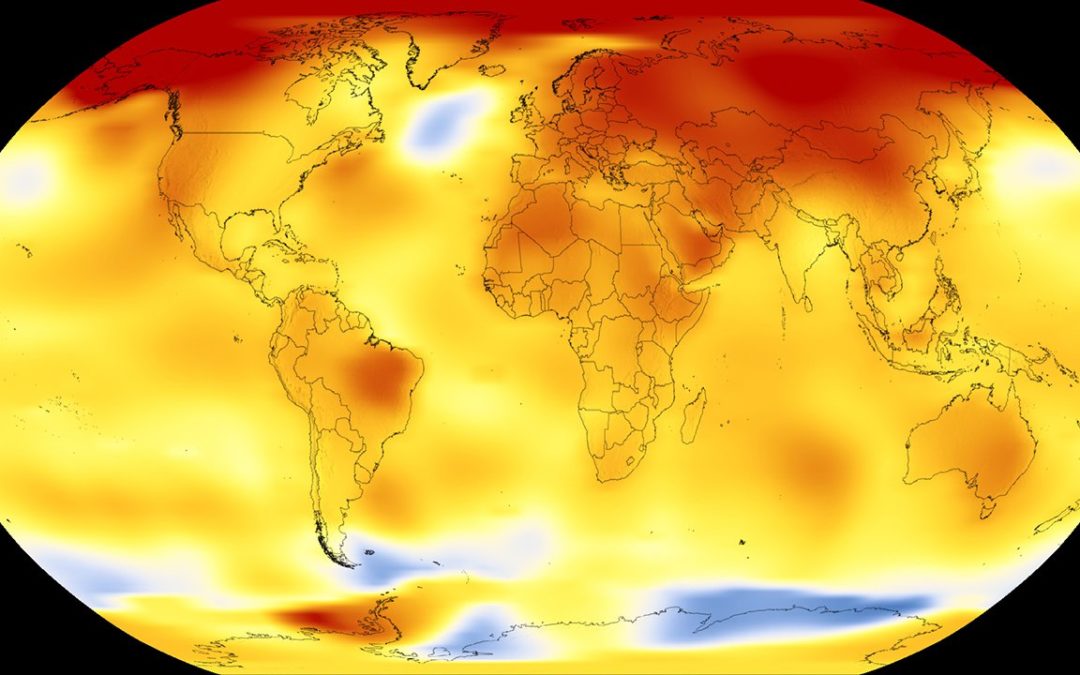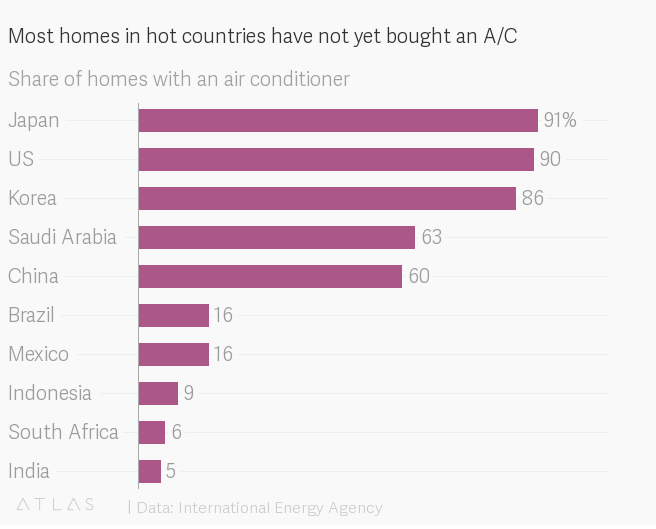SOURCE: National Observer
DATE: July 13, 2018
SNIP: The use of air conditioners is predicted to explode as year after year sets new “hottest temperatures on record.” According to a May 2018 report by the International Energy Agency, the number of air conditioners worldwide will skyrocket from 1.6 billion units today to 5.6 billion units by 2050. That would spell trouble for the planet because of the energy air conditioners need and some of the chemicals they use.
China leads the world with 569 million units installed, and now spends 68 times more electricity for cooling than it did in 1990. With a burgeoning middle class, China’s demand for air conditioners is rising faster than anywhere else in the world.
Because of all the demand for energy, air conditioning is on the rise as a driver of climate change. In the U.S., it’s about six per cent of the country’s total residential energy use, according to a 2013 report by the Energy Information Administration, but that number might soar to almost 20 per cent by mid-century if things continue.
In addition to electricity demand, air conditioners — especially ones used in developing countries — use hydrofluorocarbons, (HFCs) which are potent greenhouse gases. Even though HFCs represent a small portion of total greenhouse gas emissions, they trap thousands of times more heat in the atmosphere than carbon dioxide. While HFCs don’t leak into the environment when an air conditioner is working properly, they cause damage if they aren’t carefully disposed of.
In 2009, half of Canadian households (50 per cent) reported having some type of air conditioning system to combat the heat. According to Statistics Canada, Manitoba has the highest proportion of households with an air conditioner (80 per cent), followed by Ontario (74 per cent) and Saskatchewan (61 per cent). The regions with the lowest household use of air conditioning were reported in Atlantic Canada (19 per cent) and British Columbia (23 per cent).
But even in B.C., the use of air conditioning has more than tripled in the last 16 years from just one-tenth of homes in 2001, to 34 per cent in 2017, according to a new report by BC Hydro.


